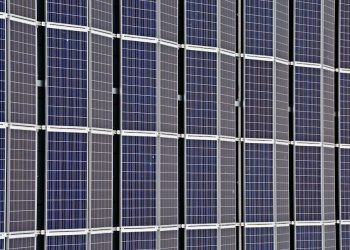In a world increasingly driven by sustainable innovation, solar panels have emerged as one of the shining beacons of clean energy solutions. Yet, as these marvels of modern technology continue to illuminate homes and businesses across the globe, a shadowy question looms: what happens when their lifecycle dims? Enter the often-overlooked realm of solar panel recycling—a crucial but underappreciated component of the renewable energy revolution. This article delves into the intricacies of solar panel recycling, shedding light on the processes, challenges, and opportunities that come with responsibly managing the afterlife of these energy-capturing giants. As we explore this essential aspect of sustainability, you’ll discover what you need to know about giving solar panels a second chance to shine.
Environmental Benefits of Solar Panel Recycling
Incorporating solar panel recycling into our sustainability practices offers a myriad of environmental benefits that can significantly reduce the ecological footprint of solar energy systems. As solar panels reach the end of their life cycle, recycling prevents hazardous materials from entering landfills and conserves natural resources. The process reclaims valuable materials such as silicon, silver, and copper, which can be reused in the production of new panels, thus minimizing the need for raw material extraction.
- Resource Conservation: Recycling ensures that precious metals and minerals are extracted and reused, reducing the strain on natural reserves.
- Reduction in E-Waste: Proper recycling prevents toxic substances from polluting soil and water sources.
- Energy Efficiency: The energy required to recycle materials is generally less than that needed for raw material extraction and processing.
By supporting solar panel recycling initiatives, we can enhance the overall sustainability of renewable energy technologies, ensuring that our shift towards green energy is not only efficient but also environmentally responsible.

Understanding the Solar Panel Recycling Process
The life cycle of solar panels doesn’t end when they stop producing energy. In fact, recycling these panels is crucial to ensuring a sustainable future. The process typically begins with the dismantling of the panel, separating its core components: glass, silicon, and metals like aluminum and copper. This careful disassembly ensures that each material can be processed in a way that maximizes recovery and minimizes waste.
- Glass: This makes up about 80% of a solar panel and is easily recyclable into new panels or other products.
- Silicon: After being purified, silicon can be reused in new panels, reducing the need for fresh raw materials.
- Metals: Copper and aluminum are melted down and repurposed, further contributing to a circular economy.
Adopting advanced recycling technologies not only supports environmental conservation but also boosts economic opportunities through the creation of new industries centered around recycled solar materials.
Challenges and Solutions in Solar Panel Recycling
As the solar industry grows, so does the volume of photovoltaic modules reaching the end of their life cycle. This rise poses several challenges in the realm of recycling. One major hurdle is the complexity of the materials involved. Solar panels consist of various components, including glass, metals, and silicon, all tightly bonded together. The separation process is intricate and requires advanced technology to ensure the efficient recovery of valuable materials without causing environmental harm. Additionally, the lack of standardized recycling protocols across different regions can lead to inefficiencies and inconsistencies in handling these panels.
Despite these challenges, innovative solutions are emerging. Key approaches to improving solar panel recycling include:
- Advanced mechanical processes: Developing techniques that can effectively dismantle panels and separate materials for reuse.
- Policy development: Establishing comprehensive guidelines and regulations to create a uniform recycling framework.
- Collaboration: Encouraging partnerships between manufacturers, recyclers, and policymakers to drive research and innovation.
By addressing these issues, the industry can pave the way for a sustainable future where solar energy continues to thrive while minimizing waste.

Key Recommendations for Effective Solar Panel Recycling Practices
To ensure that solar panel recycling is both effective and environmentally friendly, several key recommendations should be considered. Firstly, it’s essential to establish a robust infrastructure for collection and transportation. This includes creating designated drop-off points and utilizing eco-friendly transportation methods to minimize the carbon footprint during the recycling process. Collaboration with local governments and recycling organizations can streamline these efforts.
Another important recommendation is to invest in advanced recycling technologies. These technologies should focus on maximizing the recovery of valuable materials such as silicon, silver, and copper, which can then be reused in the production of new panels. Furthermore, fostering innovation in recycling methods can lead to more efficient processes. Engaging in public awareness campaigns can also encourage consumers to participate in recycling programs, ensuring a steady flow of materials to recycling facilities. Together, these practices can help create a sustainable cycle that benefits both the environment and the economy.
Final Thoughts
As the sun sets on our exploration of solar panel recycling, it’s clear that the journey toward a sustainable energy future is as much about innovation in recycling as it is about harnessing the power of the sun. We’ve peeled back the layers on what happens when solar panels reach the end of their lifecycle, revealing a landscape ripe with potential for both environmental stewardship and economic opportunity. As we continue to embrace solar energy, let us not overlook the importance of closing the loop on sustainability by ensuring that the materials that capture the sun’s rays today can be reborn into the technologies of tomorrow. By staying informed and engaged, we can illuminate a path that not only powers our homes but also protects our planet. The sun may set, but the promise of a brighter, greener future continues to rise.

































